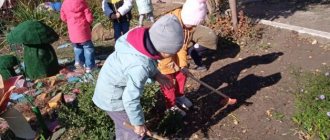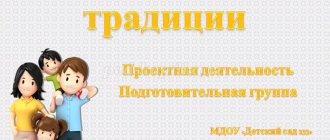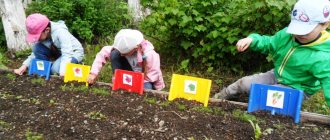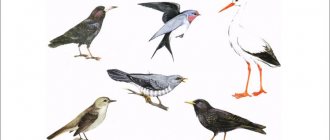Research work of a preschooler. Example
Research work.
Topic: “The Magic of Soap Bubbles” CONTENTS: 1. Introduction……………………………………………………………………………….2 2. Main part: 2.1 Theoretical part…… ………………………………………..……4 2.2. Practical research……………………………………………………….……6 3. Conclusion…………………………………………………………………………………. 9 4. References…………………………..…………………………10 * * * 1. Introduction. It burns like a peacock's tail, What colors are there not in it! Purple, red, blue, green, yellow! A light ball is playing with lights in the open space. Now the sea turns blue in it, Now there is a fire burning in it... There were so many colors in it, There was such arrogance, And he was water and soap, a bloated mixture. S.Ya. Marshak. Relevance of the topic: In the summer, my mother bought me soap bubbles. My brother and sister and I had fun blowing bubbles. We did this while running, and from a height, and blew in different directions and with different strengths. It was fun, but not for long. The solution quickly ran out. We made a new solution. But we didn’t get the kind of bubbles we had. I became very interested in what needs to be added to the solution to make the bubbles bright, large and strong. I asked my mother to help me study the history of soap bubbles and the secret of the solution. Research topic : “The magic of soap bubbles.” Purpose of the study: To study theoretical material on the topic “Soap Bubbles”. Conduct research on soap bubble recipes and identify the most effective ones. Objectives: 1. Analyze the scientific literature on the topic being studied. 2. Conduct a study of the effectiveness of liquids for blowing soap bubbles. 3. Investigate the properties of soap bubbles obtained from different solutions, as well as using different detergents. 4. Draw conclusions. Object of study : solutions for soap bubbles. Subject of research : obtaining large bubbles from different solutions. Research methods: 1. Analysis of scientific literature on this study.
2. Observation of soap bubbles from various solutions. 3. Experiment. Hypothesis: 1. Suppose that soap bubbles are formed from a soap solution. 2. The size and stability of soap bubbles depends on the composition of the bubble liquid. 2. Main part.
2.1.Theoretical part In order to find out how and when soap bubbles appeared, first of all, my mother and I went to the library. Together with the librarian, we tried to find at least some information about soap bubbles. We looked through the children's encyclopedia "Everything about everything", "I want to know everything", and studied other children's encyclopedias. And no information. True, along the way I learned what soap is made from, what detergents are needed for, when the first powder was invented. Time, of course, was not wasted. But I haven’t found anything about soap bubbles yet. Then I asked my older brother to find information on the Internet. and we found... A soap bubble is a thin film of soapy water that forms a sphere with an iridescent surface. When and where exactly soap bubbles appeared remains a mystery to this day. But it is known for certain that during excavations of ancient Pompeii, archaeologists discovered unusual frescoes depicting young Pompeians blowing soap bubbles. This means that bubbles delighted children and adults back in the days of ancient Pompeii. Apparently they had their own secrets for making soap. There is a legend about the appearance of the first soap bubble: one fine day, when soap was finally created, the king, not joking at all, ordered everyone to wash themselves with soap under pain of death. And everyone washed their washcloths that day. Only one old shoemaker named Pumpatus sat hidden in his shoebox. More than anything else, Pumpatus hated washing his neck. Footsteps were heard outside the window. Two huge guards took Pumpatus by the armpits and five minutes later they were leading him to the city prison. In the room where Pumpatus was locked, there was a bathtub with soapy foam and a lot of towels. "Agree?" - asked two huge guards. "Never!" - answered Pumpatus. And he was left to smoke his pipe for the last time. Pumpatus took a drag and suddenly saw a beautiful transparent ball fly out of the tube. The ball flew out the window and shone in the Sun: small rainbows were jumping in it. After the first ball, the second one flew out... Pumpatus looked with all his eyes at the miracle taking place. The passers-by below also raised their heads to look at it. Soon a crowd gathered and a commotion began. Everyone, of course, forgot to think about the fact that Pumpatus was supposed to be executed. The professor, who was invited to figure it out, examined Pumpatus' pipe. “Soap scum got into the pipe. That’s what it’s all about,” the professor announced to the crowd outside the window. Pumpatus, of course, was not executed, and after that soap bubbles became popular not only in one small kingdom, but throughout the whole world! Even in the paintings of Flemish artists of the 18th century, there were often images of children blowing soap bubbles through a clay straw. In the 18th and 19th centuries, children blew soap bubbles using soapy water left over from washing. There is even a myth about the fragility of a soap bubble, but it was dispelled by the Englishman James Dewar, who preserved the soap bubble in a sealed vessel with double walls. An Indiana physics teacher managed to preserve a bubble in a glass jar for 340 days. The students surpassed the teacher - their bubbles were kept under lock and key for many years. A soap bubble is a thin multilayer film of soapy water filled with air, usually in the form of a ball with an iridescent surface. The bubble film is three-layer: it consists of a thin layer of water sandwiched between two layers of soap (soap + water + soap). This fun has long attracted children and adults. Soap bubbles usually last only a few seconds and burst when touched or spontaneously. 2.2 Practical research. After studying the theory and collecting information, I told the children in the group about it. The guys were very interested, they were so interested, they constantly asked me about everything. And then teacher Ekaterina Alexandrovna suggested that we conduct an experiment in kindergarten. And we all started the practical part of my research together. There are many recipes for making soap bubbles. Some of the composition of the bubbles is kept in the strictest confidence, because they allow one to blow truly gigantic soap bubbles, which are even included in the Guinness Book of Records. Others can be found in books or on the Internet. For my work, I chose several recipes. Recipe No. 1. This is the easiest way to make soap bubbles at home. Take 100 ml. dishwashing detergent and add 50 ml of glycerin and 300 ml of water, mix everything thoroughly and you're done! Glycerin is precisely the substance that makes the walls of a soap bubble stronger, and the bubble itself, accordingly, long-lived. Recipe No. 2. It's also not complicated at all. Add 50 ml of clear baby shower soap to a container with 60 ml of water. Add half a teaspoon of sugar. Mix everything and use it. Recipe No. 3. This recipe is much more difficult to make, but it produces bubbles that don’t burst. Water - 600 ml. (hot) add glycerin - 300 ml, drip - 20 drops of ammonia, and pour washing powder - 50 g. The entire composition is thoroughly mixed, infused for about three days, filtered and placed in the refrigerator for about twelve hours. Recipe No. 4. Take soap shavings - 4 tbsp. spoons add 400 ml of hot water. Leave for one week, and then add sugar + gelatin - 2 teaspoons. The solution is ready and you can try it. Recipe No. 5 You need to take 40 ml of baby shampoo without tears, add 60 ml of water, 2 teaspoons of sugar and 1 drop of food coloring.
Progress of the study:
Stage 1 Preparatory. For this experiment we needed the following substances: - distilled water - dishwashing liquid - glycerin - baby transparent shower soap - sugar - ammonia - washing powder - soap - baby shampoo - food coloring - gelatin. - kettle (boiling water). As well as cups, measuring containers, blowing tubes, scales. Stage 2 Preparing soap bubbles.
The compositions of all soap solutions were observed.
While blowing soap bubbles from different solutions, we made observations, took measurements and entered the data into a table. Soap bubble composition testing table. Composition No. Test ….. 1 ….. 2 ….. 3 ….. 4 ….. 5 Soap bubble lifetime ….. 5 sec ….. 10 sec ….. 2 sec ….. 4 sec ….. 8 sec Average size ..... 3 cm ..... 7 cm ..... 3 cm ..... 5 cm ..... 8 cm Maximum size ..... 8 cm ..... 10 cm ..... 5 cm ..... 5 cm ..... 10 cm Out of ten it turned out ..... 7/10 ..... 10/10 ..... 6/10 ..... 3/10 ..... 8/10 Of these small ones ..... 4 ..... 3 ….. 5 ….. 3 ….. 5 Of these large ones ….. 3 ….. 7 ….. 1 ….. — ….. 3 According to experiments, the victory is awarded to soap solution No. 2, and also practically divides with it the first place was solution No. 1 and 5. All other compositions did not show the best results. 3. Conclusion. The hypothesis of the formation of soap bubbles from a soap solution turned out to be correct: soap bubbles actually contain soap and detergents. But in addition to these main substances, you also need to add several components, the main ones of which are water, glycerin, a little sugar, food coloring, gelatin. The water for the solution should be soft or distilled. We have seen from our own experience that the best that can be is laundry and baby soap. For long-lived bubbles, it is recommended to add pure glycerin to the resulting solution. In general, any cleaning liquid will work for bubbles, but the best results will be obtained using the ingredients described. Making a soap solution for blowing soap bubbles at home is a completely doable and interesting activity. Blowing soap bubbles lifts your mood, forgets all your problems, and actually develops your lungs well. All this has a beneficial effect on health. References: 1. How to make soap bubbles 2. Malofeeva N. N. Big book of the most interesting facts. – M.: JSC “ROSMEN-press”, 2010. – P.149 3. Soap bubbles (video).
We recommend watching:
Project in the senior group of a kindergarten Project in the senior group on the topic “Trees and shrubs in spring” Practice-oriented project for landscaping the territory of a kindergarten Educational project. Second junior group
Similar articles:
Educational and creative project on the theme “Golden Autumn”. Junior group
Project for children of the senior group “Our cheerful garden”
"I am a researcher"
On April 28, the third stage of the republican competition of research works for preschool children “I am a researcher” took place at the Academy of Postgraduate Education.
The ceremonial part of the republican competition was attended by specialists from the education departments of regional executive committees, the education committee of the Minsk city executive committee, educational development institutes, and heads of preschool education institutions.
Preschool children are natural researchers. This world is full of secrets and wonders for them. In the process of their research activity, the children transform simple childhood curiosity into the most valuable quality - a cognitive need that is so necessary for them in the modern dynamically changing world. In their works they explored: what clouds are, why bread is white and black, why a balloon is afraid of an orange, and much more.
All participants in the third stage of the competition were awarded diplomas and memorable gifts.
The National Center for Artistic Creativity of Children and Youth organized a concert program for the participants with the participation of the folk vocal and instrumental ensemble “Red Stars”, the choreographic ensemble “Smileys”, the interest association “Variety Vocals”, the modern choreography ensemble “Inspiration”; exemplary choreographic ensemble "Child of the World".
Results of the third stage of the republican competition of research works for preschool children “I am a researcher”
In the “Child and Nature” nomination, diplomas of the Ministry of Education of the Republic of Belarus were awarded to:
Olga Guk, Kupyatichsky nursery-garden of the Pinsk district, the topic of the research work is “Secrets of the glomerulus,” the head of the research work is preschool teacher Lyudmila Lopushko;
Bagrova Maria, nursery-kindergarten No. 14 in Polotsk, topic of the research work “What did the apples tell”, head of the research work - preschool teacher Elena Traskova;
Savelyeva Yana, Gezgalovsky nursery-kindergarten, the topic of the research work is “What are clouds?”, the head of the research work is the legal representative of the pupil Savelyeva Elena;
Pikun Vladislav, nursery-kindergarten No. 12 “Beryozka”, Zhodino, topic of the research work “Vegetables and fruits - sources of energy”, head of the research work - legal representative of the pupil Ekaterina Pikun.
The diploma of the Ministry of Education of the Republic of Belarus of the third degree was awarded to Ulyana Barkalova, kindergarten No. 2 “Solnyshko”, Kostyukovichi, the topic of the research work “Who planted a birch tree on the roof?”, The head of the research work is preschool teacher Tatyana Sadkova.
The diploma of the Ministry of Education of the Republic of Belarus of the second degree was awarded to Evgeniy Mankovsky, nursery school No. 240 in Minsk, the topic of the research work “Why is bread white and black?”, the head of the research work is the legal representative of the pupil Tatyana Mankovskaya.
The diploma of the Ministry of Education of the Republic of Belarus of the first degree was awarded to Ekaterina Usikova, nursery school No. 24 in Mozyr, the topic of the research work is “Why doesn’t a lemon drown in water?”, the head of the research work is preschool teacher Tatyana Gapanchuk.
In the nomination “May Radzima Belarus ” the following were awarded diplomas of the Ministry of Education of the Republic of Belarus for participation in the republican competition:
Nakhai Alexandra, Preschool Child Development Center “Rosinka” in Volozhin, topic of the research work “History of Toy Childhood”, head of the research work - preschool teacher Bekish Alesya;
Ksenia Kokhanskaya, Preschool Child Development Center No. 89 in Grodno, topic of the research work “Chamu guchyts tsatska-whistle?”, head of the research work - teacher-defectologist Petrutik Svetlana;
Kira Krivulets, nursery school No. 72 in Brest, research topic “Secrets of pottery”, head of the research work, preschool teacher Natalya Kazarenko;
Vavula Maxim, nursery school No. 44 in Bobruisk, the topic of the research work is “From the plow to the tractor,” the head of the research work is preschool teacher Irina Solodovnikova.
Diplomas of the Ministry of Education of the Republic of Belarus of the third degree were awarded to:
Bulavchenko Dmitry, Nikitenko Valeria, nursery school No. 27 in Vitebsk, the topic of the research work is “The Secret of Grandma’s Chest,” the head of the research work is the deputy head for main activities Galina Komissarova.
The diploma of the Ministry of Education of the Republic of Belarus of the second degree was awarded to Alisa Bezmenova, nursery-kindergarten No. 172 in Minsk, the topic of the research work is “What secrets do folk dolls keep?”, the head of the research work is the deputy head of the main activity, Rutskaya Rita.
The diploma of the Ministry of Education of the Republic of Belarus of the first degree was awarded to Nikitin Vladislav, Brilevsky nursery garden, the topic of the research work is “Belarus is my blue-eyed”, the head of the research work is the deputy head for main activities Tatyana Simonenko.
In the category “Unusual in the Ordinary” the following were awarded diplomas from the Ministry of Education of the Republic of Belarus for participation in the republican competition:
Tereshchuk Daria and Zhurko Anna, nursery-garden No. 9, Kobrin, topic of the research work “Santa Claus! Who are you?”, head of the research work - preschool teacher Elena Tsimuk;
Mazura Maria, nursery school No. 92 in Minsk, the topic of the research work is “Professions of my family,” the head of the research work is preschool teacher Lyudmila Dydyshko;
Yukhno Sofya, nursery-kindergarten No. 31, Lida, topic of the research work “How do grains of sand turn into pictures?”, head of the research work - legal representative of the pupil Yukhno Ekaterina;
Samusev Saveliy, nursery school No. 12 in Rogachev, topic of the research work “Why is the ball afraid of an orange?”, head of the research work - educational psychologist Svetlana Dymko;
Moskalevich Artyom, nursery school No. 4 in Berezino, the topic of the research work is “Candy is delicious, but for some reason the teeth are sad,” the head of the research work is the head of the educational institution Semashko Svetlana.
The diploma of the Ministry of Education of the Republic of Belarus of the third degree was awarded to Tatyana Dalimaeva, preschool child development center No. 1 in Mogilev, the topic of the research work is “Miracle light that saves lives”, the head of the research work is preschool teacher Natalya Biryukova.
The diploma of the Ministry of Education of the Republic of Belarus of the second degree was awarded to Grin Emilia, nursery school No. 397 in Minsk, the topic of the research work is “Why is a watermelon called a water melon?”, the head of the research work is preschool teacher Zhanna Makovskaya.
The diploma of the Ministry of Education of the Republic of Belarus of the first degree was awarded to Dana Sviridova, nursery school No. 99 in Vitebsk, the topic of the research work is “Crushers on the windowsill”, the head of the research work is the deputy head for main activities Victoria Volkova.
In the Lost and Found category, the following were awarded diplomas from the Ministry of Education of the Republic of Belarus for participation in the republican competition:
Shishko Andrey, Uzda Child Development Center “Vyaselka”, topic of the research work “How many professions does a tree have?”, head of the research work - preschool teacher Bet Ekaterina;
Krivoschekov Semyon, kindergarten in Antopol, the topic of the research work is “Several secrets of the beaver Zubik”, the head of the research work is preschool teacher Nina Kudina.
The diploma of the Ministry of Education of the Republic of Belarus of the third degree was awarded to Luchko Vitalina, nursery school No. 69 in Vitebsk, the topic of the research work is “Secrets of a fountain pen and ballpoint pen,” the head of the research work is a preschool teacher and the legal representative of the pupil Luchko Irina.
The diploma of the Ministry of Education of the Republic of Belarus of the third degree was awarded to Rubanova Ekaterina, nursery school in Veino, the topic of the research work is “Magic Thread”, the head of the research work is preschool teacher Lidiya Konovalova.
The diploma of the Ministry of Education of the Republic of Belarus of the second degree was awarded to Timur Mamedov, nursery school No. 1 of the town of Korelichi, the topic of the research work “I want to know the answer: Is Chupa Chups useful or not?”, the head of the research work is preschool teacher Reshetko Lyudmila.
The diploma of the Ministry of Education of the Republic of Belarus of the first degree was awarded to Mikolos Roman, nursery school No. 1 in Yelsk, the topic of the research work is “What can ink be made from?” The head of the research work is preschool teacher Svetlana Yakimets.
See photos in the “Photo Gallery” section.







